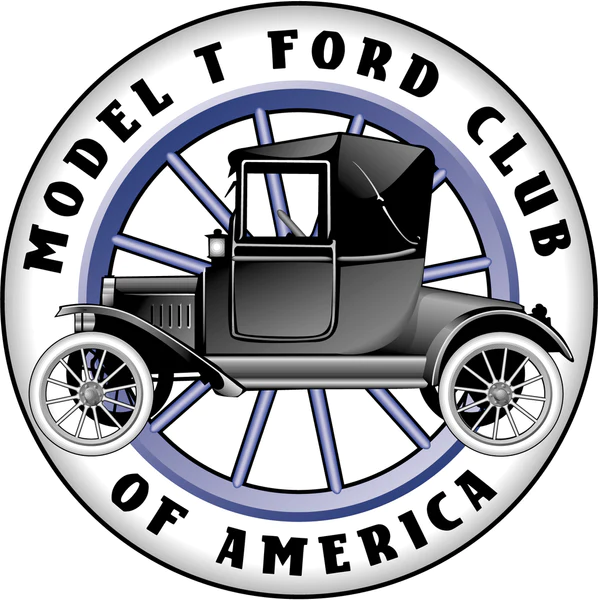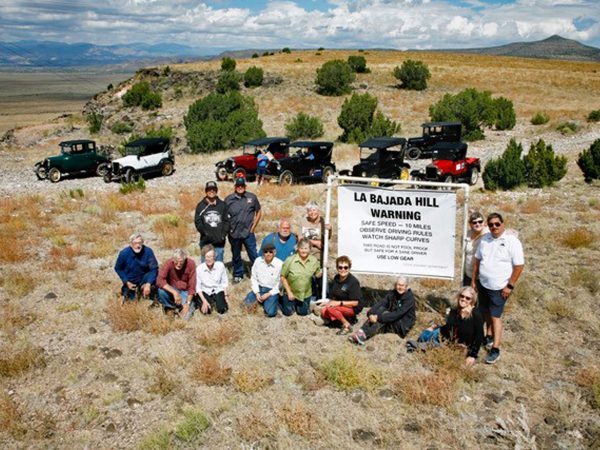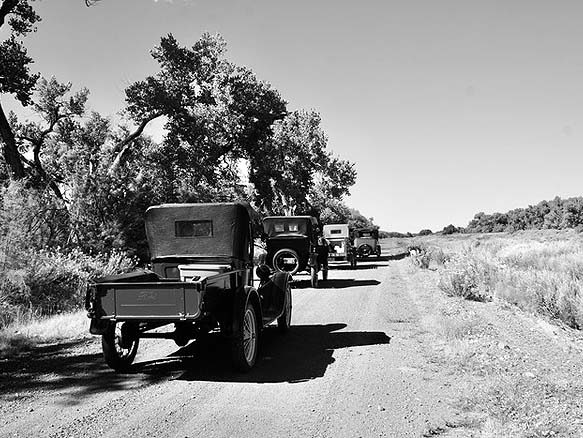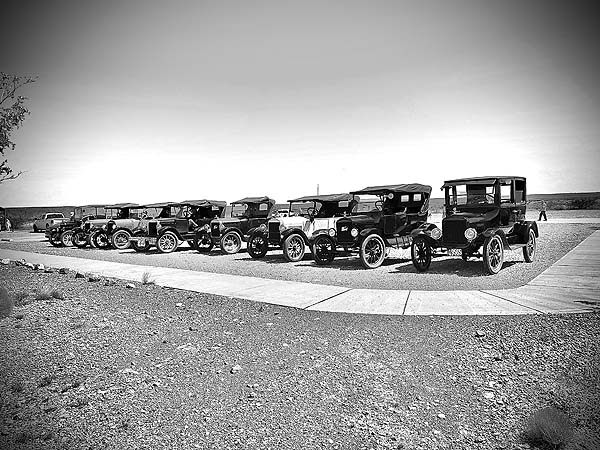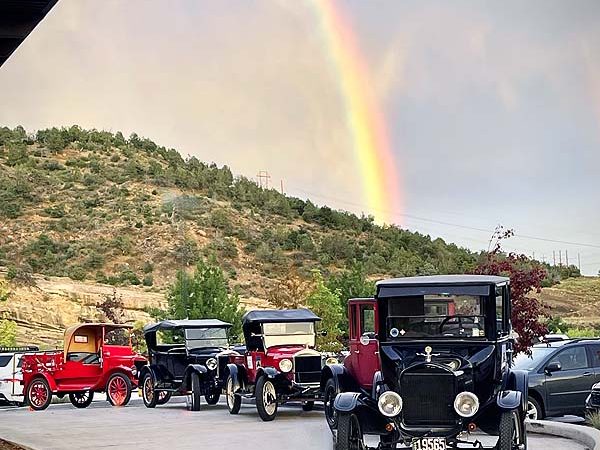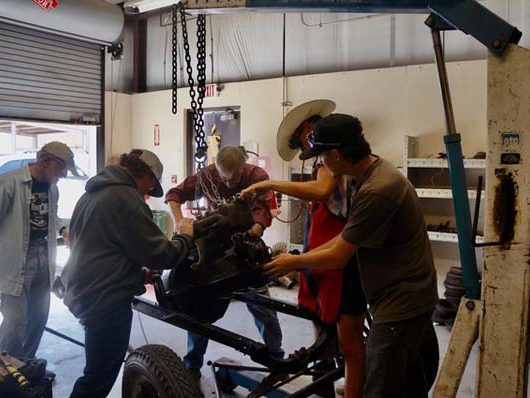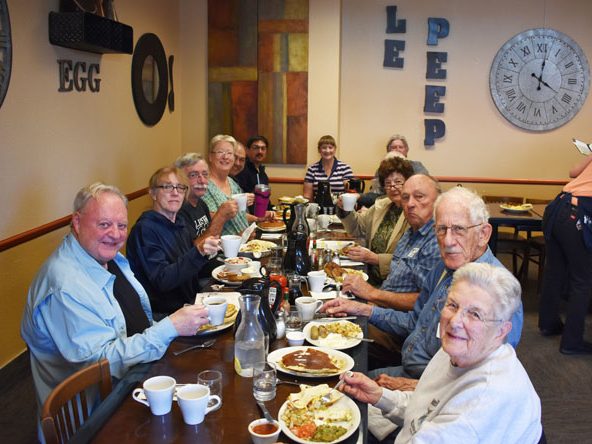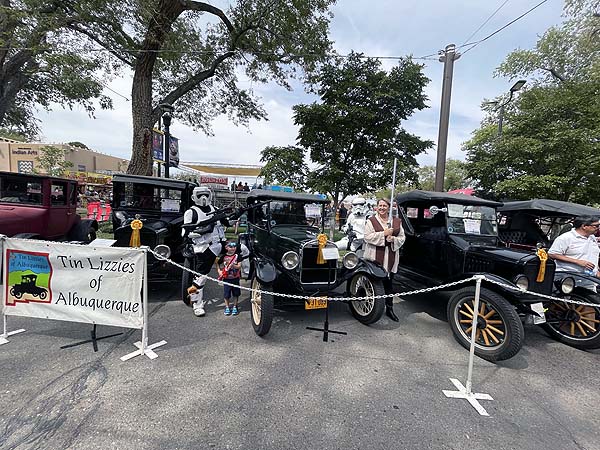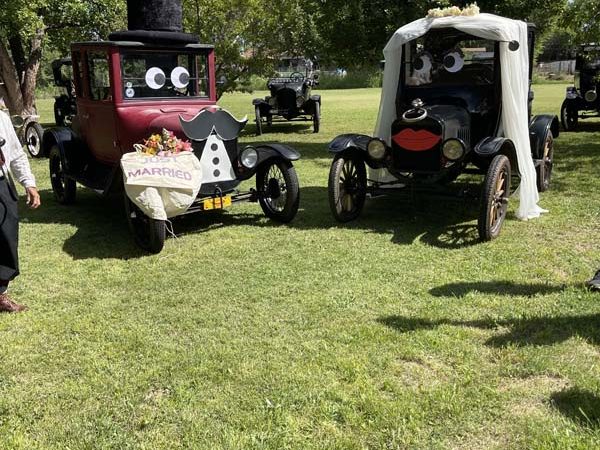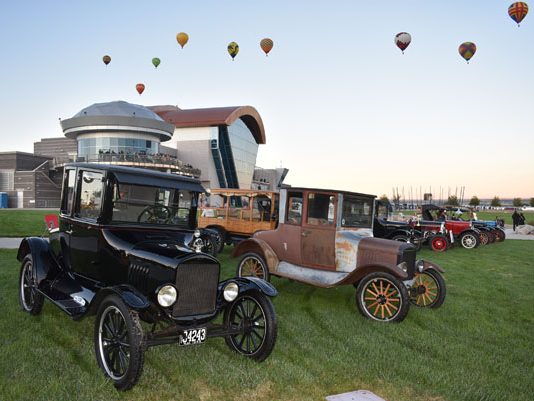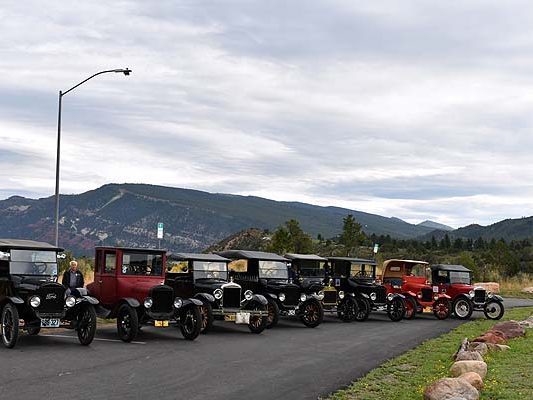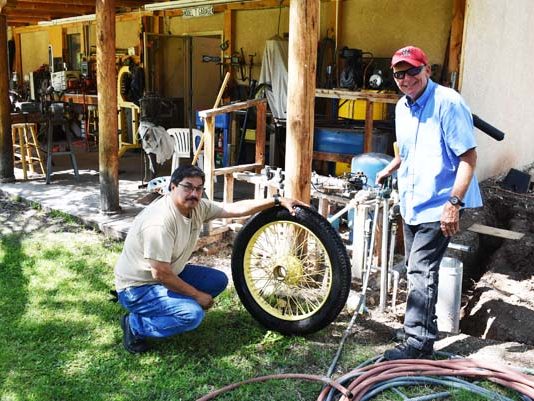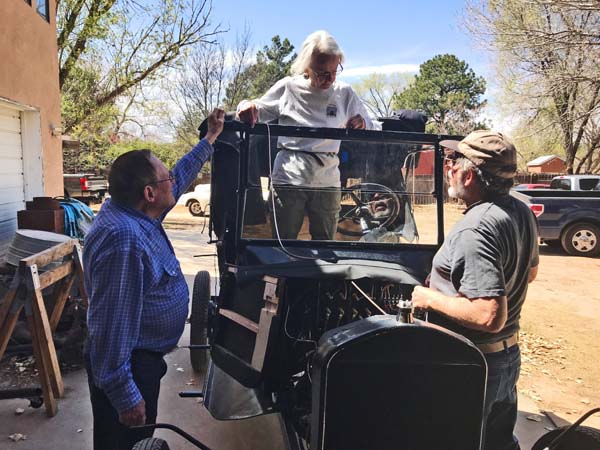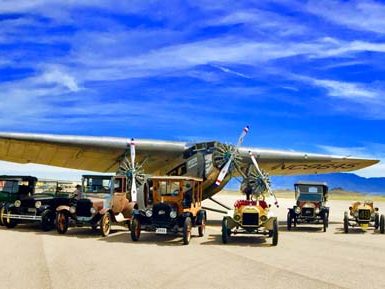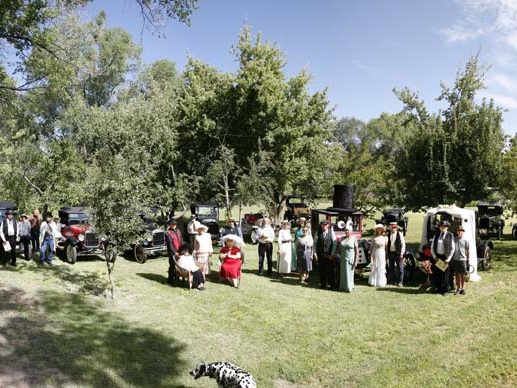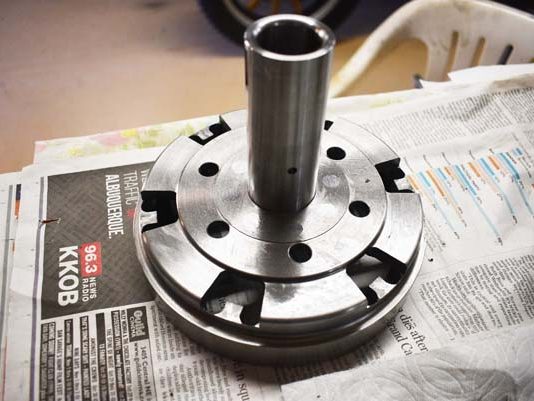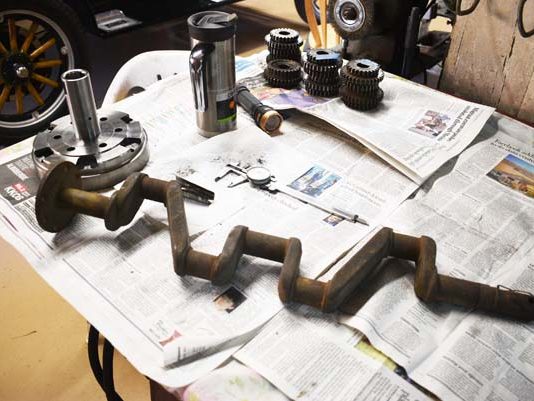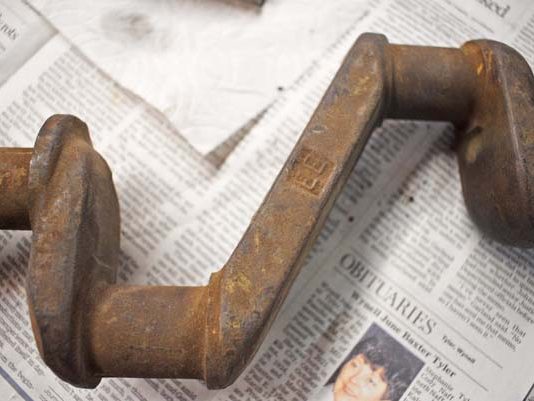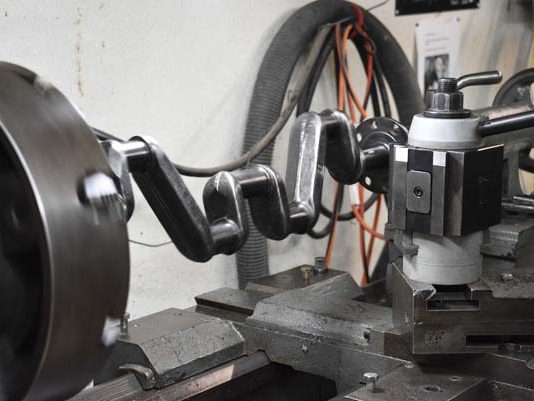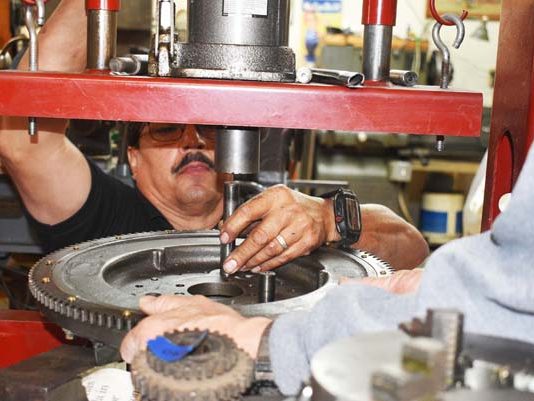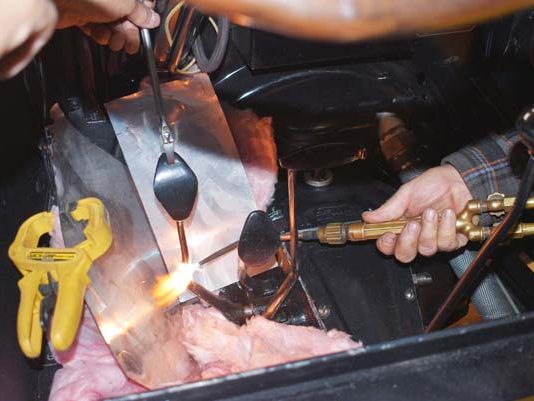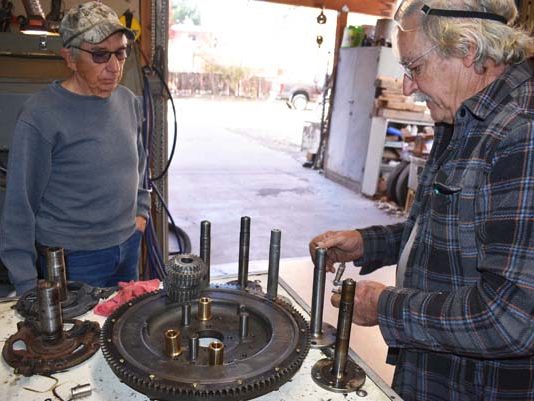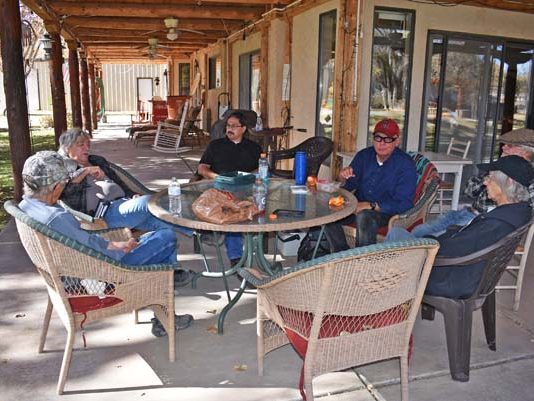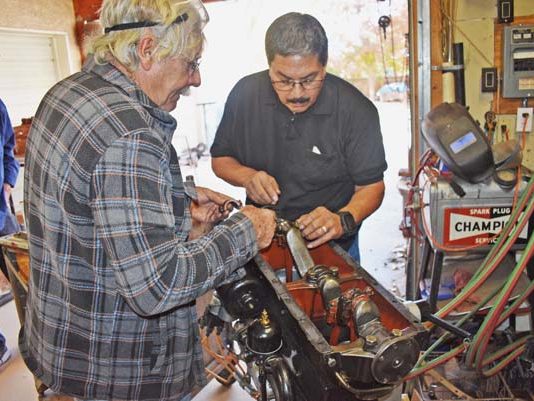Story and photos by Mark Wing (unless otherwise noted)
At this work day at Larry’s Garage, Mark Dominguez was working on the transmission for his 1923 runabout named after his daughter Samantha “Sam”. Sam had a transmission component wear to the point where it wasn’t shifting into high gear and the “three-fingers” adjustment didn’t solve the problem. Mark had access to many parts from his late father-in-law, Clarence Schritter. This included a flywheel in good condition with a new starter ring gear already mounted. The triple gear pins were worn, and at this work day, Mark pressed the old triple gear pins out. Larry was measuring a large collection of transmission shafts looking for a usable one still in spec.
Larry was looking for an 1926-27 “EE” crankshaft for his Montana 500 race car project. EE crankshafts have a higher Vanadium steel content than traditional Model T cranks and are less prone to breakage. Mark Wing had one in inventory so it was contributed to Larry’s Montana 500 project. Larry found a couple of the journals to have some wear, but it could still be turned down at “Empire Engines”, our local “go to” machining company. Mark wire brushed the crankshaft before Larry mounted it on his large lathe to determine its straightness. A dial indicator showed the crankshaft to be pretty straight, but it did have a ridge on the back flange that Larry was going to flatten before having the other machining operations done.
Mark Wing had a problem with the geometry of the low band pedal on his 1925 touring car. The car drove well, but only when the pedal position was below the level of the upper floorboard. The car was driven on the last club tour with the upper floor board out and Larry had added a temporary spring to insure that the pedal returned after being depressed. This problem could have been caused by a reproduction low band cam that was installed during the restoration process in 2019 or the pedal had bent on its own over decades of use. Instead of removing the hogs head and pulling out the pedal, Larry suggested bending it back in-situ. This would certainly save a lot of work as removing a hogs head with the engine still installed is a very painful process. After using a couple of sheets of metal, fiberglas insulation, and covering the gas tank cap with a wet towel, Larry fired up his gas welder and heated the pedal arm while Mark bent the pedal backwards approximately 2 inches with a Crescent wrench. The pedal was allowed to cool down naturally. The repair worked great and now the pedal was back above the floorboards and no longer gets stuck when depressed.
Thanks Larry for a great and productive work day at your garage!
